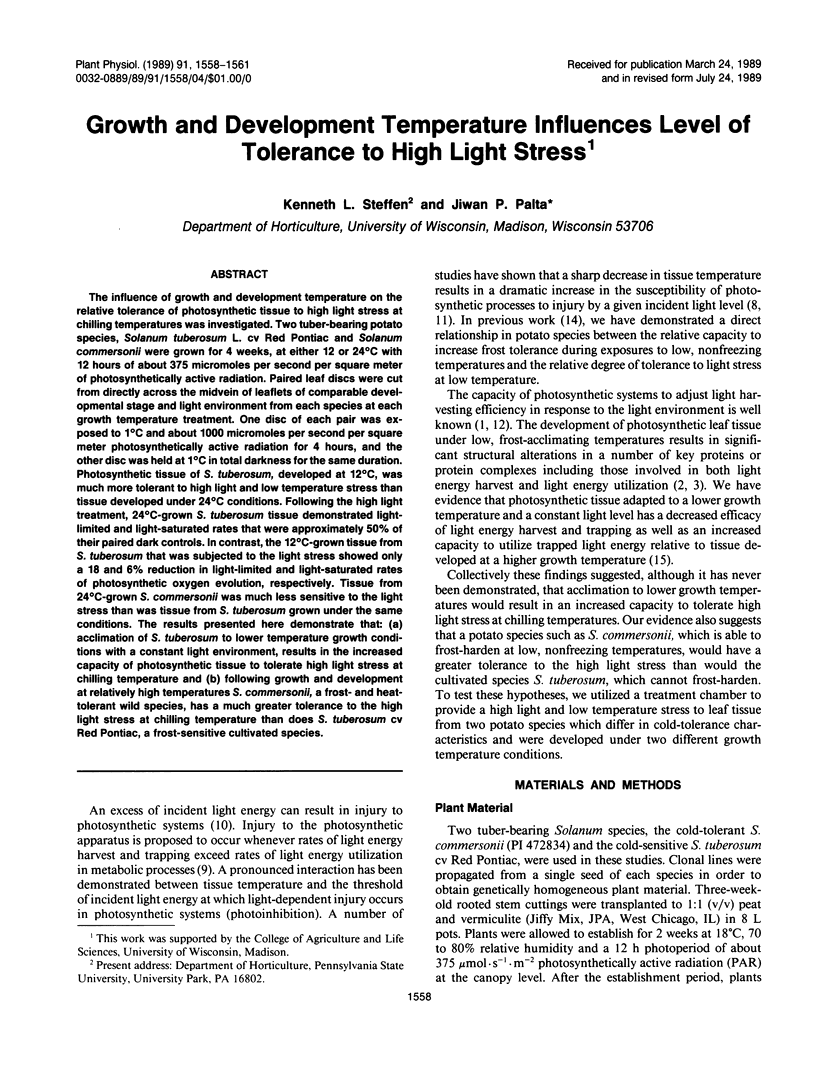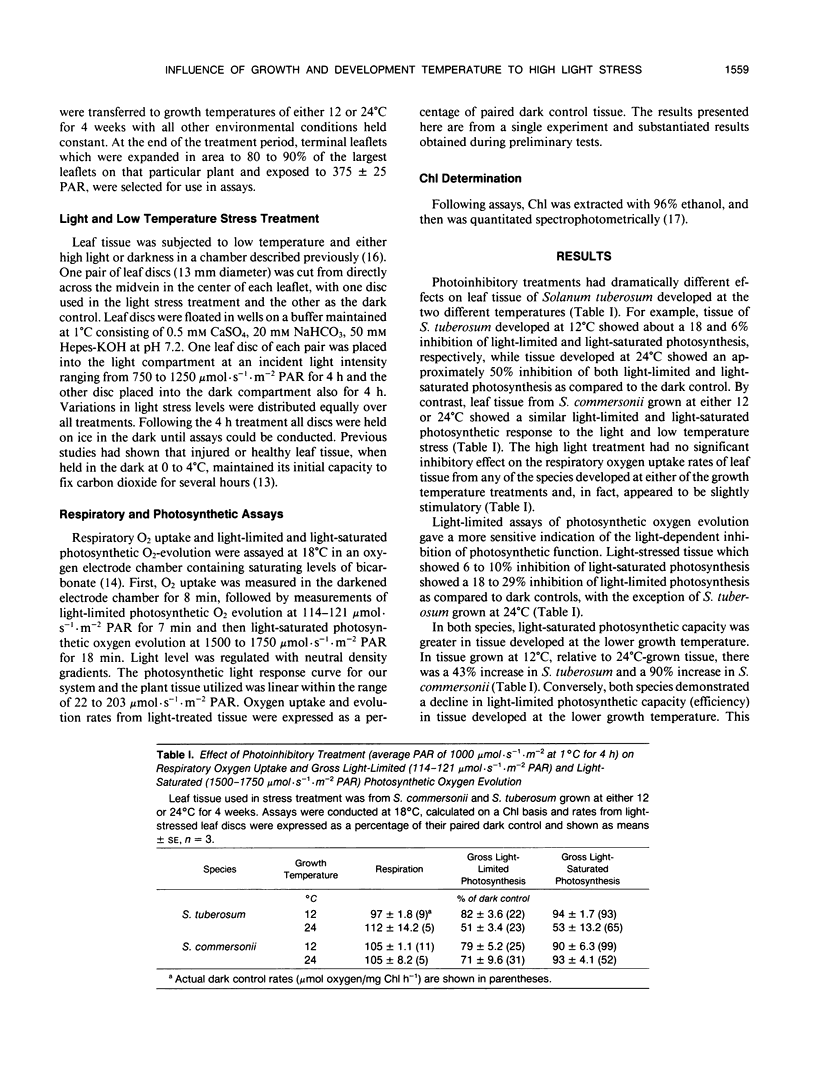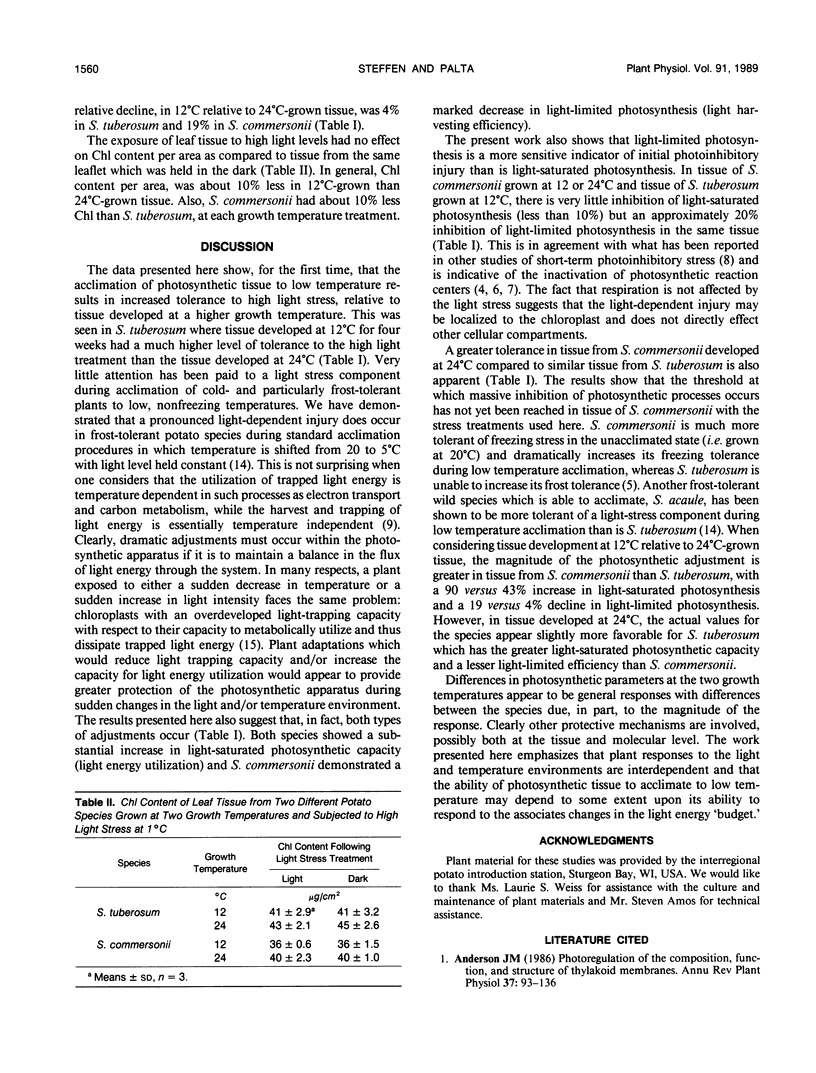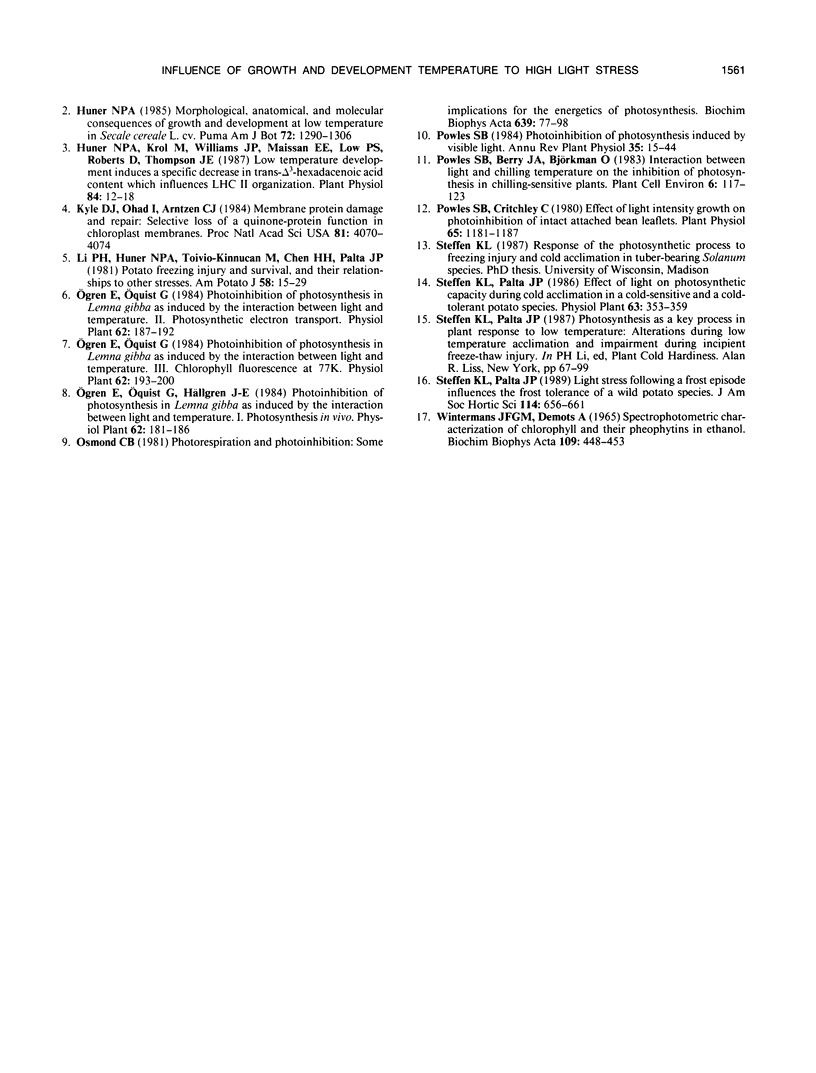Abstract
The influence of growth and development temperature on the relative tolerance of photosynthetic tissue to high light stress at chilling temperatures was investigated. Two tuber-bearing potato species, Solanum tuberosum L. cv Red Pontiac and Solanum commersonii were grown for 4 weeks, at either 12 or 24°C with 12 hours of about 375 micromoles per second per square meter of photosynthetically active radiation. Paired leaf discs were cut from directly across the midvein of leaflets of comparable developmental stage and light environment from each species at each growth temperature treatment. One disc of each pair was exposed to 1°C and about 1000 micromoles per second per square meter photosynthetically active radiation for 4 hours, and the other disc was held at 1°C in total darkness for the same duration. Photosynthetic tissue of S. tuberosum, developed at 12°C, was much more tolerant to high light and low temperature stress than tissue developed under 24°C conditions. Following the high light treatment, 24°C-grown S. tuberosum tissue demonstrated light-limited and light-saturated rates that were approximately 50% of their paired dark controls. In contrast, the 12°C-grown tissue from S. tuberosum that was subjected to the light stress showed only a 18 and 6% reduction in light-limited and light-saturated rates of photosynthetic oxygen evolution, respectively. Tissue from 24°C-grown S. commersonii was much less sensitive to the light stress than was tissue from S. tuberosum grown under the same conditions. The results presented here demonstrate that: (a) acclimation of S. tuberosum to lower temperature growth conditions with a constant light environment, results in the increased capacity of photosynthetic tissue to tolerate high light stress at chilling temperature and (b) following growth and development at relatively high temperatures S. commersonii, a frost- and heat-tolerant wild species, has a much greater tolerance to the high light stress at chilling temperature than does S. tuberosum cv Red Pontiac, a frost-sensitive cultivated species.
Full text
PDF



Selected References
These references are in PubMed. This may not be the complete list of references from this article.
- Huner N. P., Krol M., Williams J. P., Maissan E., Low P. S., Roberts D., Thompson J. E. Low Temperature Development Induces a Specific Decrease in trans-Delta-Hexadecenoic Acid Content which Influences LHCII Organization. Plant Physiol. 1987 May;84(1):12–18. doi: 10.1104/pp.84.1.12. [DOI] [PMC free article] [PubMed] [Google Scholar]
- Kyle D. J., Ohad I., Arntzen C. J. Membrane protein damage and repair: Selective loss of a quinone-protein function in chloroplast membranes. Proc Natl Acad Sci U S A. 1984 Jul;81(13):4070–4074. doi: 10.1073/pnas.81.13.4070. [DOI] [PMC free article] [PubMed] [Google Scholar]
- Powles S. B., Critchley C. Effect of Light Intensity during Growth on Photoinhibition of Intact Attached Bean Leaflets. Plant Physiol. 1980 Jun;65(6):1181–1187. doi: 10.1104/pp.65.6.1181. [DOI] [PMC free article] [PubMed] [Google Scholar]
- Wintermans J. F., de Mots A. Spectrophotometric characteristics of chlorophylls a and b and their pheophytins in ethanol. Biochim Biophys Acta. 1965 Nov 29;109(2):448–453. doi: 10.1016/0926-6585(65)90170-6. [DOI] [PubMed] [Google Scholar]


